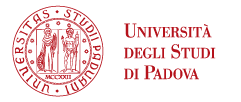
RESTORE - REconstruct subsurface heterogeneities and quantify Sediment needs TO improve the REsilience of Venice saltmarshes
PIANO NAZIONALE DI RIPRESA E RESILIENZA
TITLE: REconstruct subsurface heterogeneities and quantify Sediment needs TO improve the REsilience of Venice saltmarshes (PRIN2022PNRR - D.M. 1409/2022)
ACRONYM: RESTORE
SUMMARY
The appearance, growth, and survival of lagoon morphologies (e.g., salt marshes and tidal flats) depend on the interaction between sedimentation, sea-level rise, land subsidence and autocompaction of the shallowest subsurface. In view of the accelerating climate change and the ongoing loss of lagoon morphologies, it is crucial to quantify the amount of sediments needed to keep them resilient to relative sea-level rise (RSLR). RESTORE project aims at providing innovative advances for the survival of lagoon morphologies of the Venice Lagoon (Italy) highlighting areas with reduced sediment availability that will require specific restoration planning in a medium- and long-term scale of interventions. RESTORE’s objectives and ambitions will be achieved through a multidisciplinary approach which combines: a detailed 3D reconstrucion of the Holocene stratigraphic architecture; a novel 3D numerical model, which properly accounts for sediment autocompaction and quantify sediment needs at the lagoon basin; and a vulnerability assessment of lagoon morphologies to RSLR.
RESTORE’s expected products include:
• A detailed 3D reconstruction of the Holocene stratigraphic architecture of the Venice Lagoon;
• The quantification of sediment volumes needed for the present-day lagoon morphologies to maintain their features in relation to various scenarios of RSLR, sediment availability, and anthropogenic pressures;
• Graphical representation of the sedimentation rates required to keep the elevation of tidal morphologies at pace with RSLR;
• Maps of the vulnerability of tidal morphologies of the lagoon under different RSLR scenarios.
STARTING DATE: 30/11/2023
DURATION: 24 months
Budget: 240.000 Euro
Principal Investigator: Dr. Luigi Tosi (National Research Council of Italy - Institute of Geosciences and Earth Resources)
Project partner: Prof. Massimiliano Ferronato (University of Padua - Department of Civil, Environmental and Architectural Engineering)






